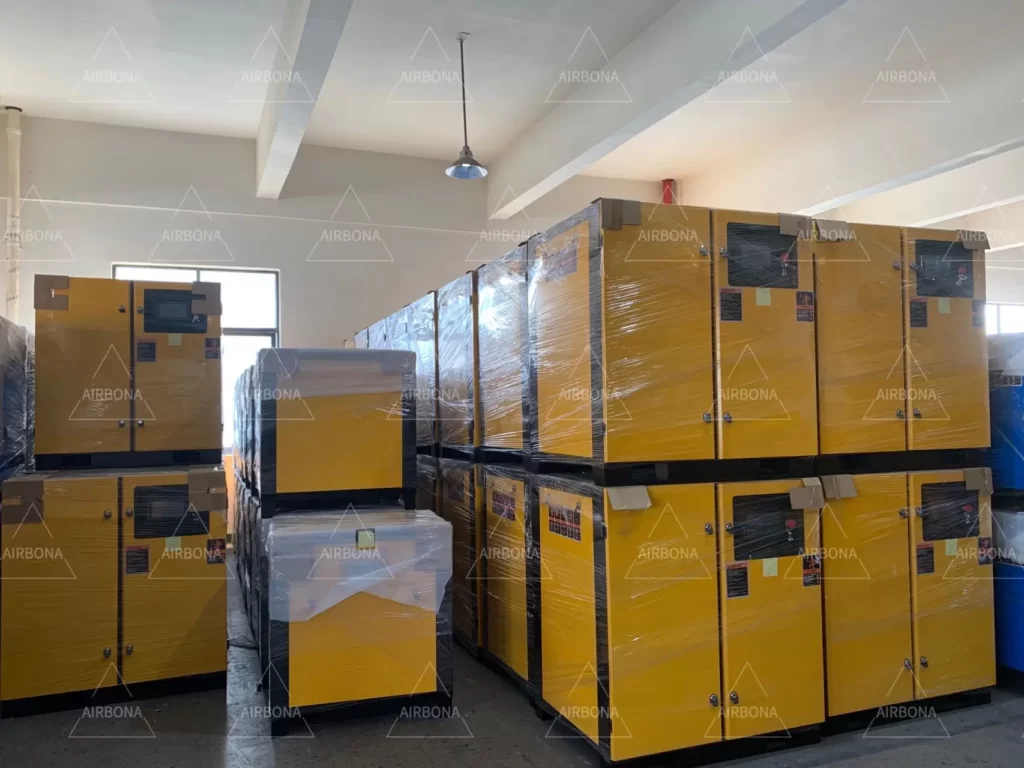The working principle of the screw air compressor is that a pair of parallel meshing female and male rotors rotate in the cylinder so that the air between the rotor teeth continuously produces periodic volume changes, and the atmosphere is transported from the suction side along the rotor axis. The whole process of suction, compression, and exhaust of the screw air compressor is realized to the output end.
As the air compressor runs at full load for a long time, users can only determine the motor capacity based on more extensive requirements when selecting models, resulting in a generally large air compressor system margin. In addition, most air compressors operate continuously. Since the general air compressor motor cannot achieve deceleration according to the change of pressure-demand, the Motor’s output power matches the actual pressure-demand on-site, and the air consumption is low. The no-load operation causes a huge waste of electric energy.
As screw air compressors are more and more widely used in industry, mining, medical industry, and even agriculture, especially in the industrial field, the power consumption of air compressors ranks first, and most air compressors are produced by Motor driven. In this way, after the filter filters the air, it enters the compressor for compression, and the compressed air is output through the separation of oil and gas. As long as the air compressor is working and the Motor runs at the rated speed, the output airflow of the air compressor is adjusted by the opening of the intake valve. Even when there is no load, it runs at the rated speed without power consumption. Therefore, it is absolutely necessary to take a variety of measures to adjust the output of the compressor so that the Motor always works under a suitable load and saves energy.


